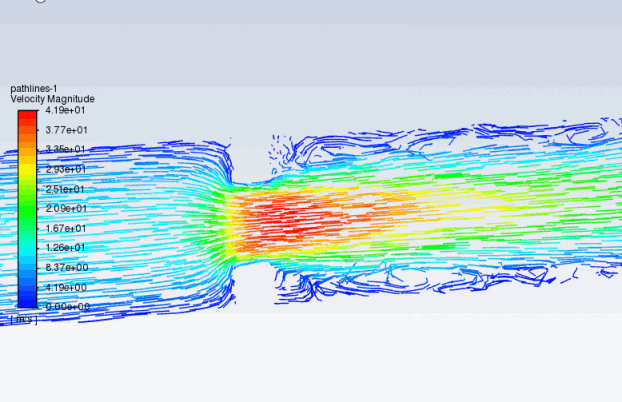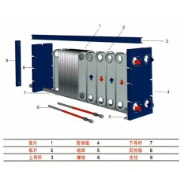概述
工作需要,经常会碰到各种流体介质:普通液压油、航空液压油,航空冷冻液,发动机滑油,这些油液的工作温度特别宽,高温会到200℃以上,低温会到-55℃,并且各种介质对橡胶还存在不兼容性,有的介质会使不合适的橡胶制品发涨,鼓包,很快会失去密封特效。
那有没有类似的油液资料库,可以查到我们上面关注的知识点,可惜这方面网上的资料还真不多,最痛苦的是搜索方法,比如我们国内常说的:46#液压油,32号航空红油,65号冷冻液,这些描述都是为了方便称呼,泛指,但具体查资料的时候,需要油液的准确成分或型号,这方面,欧美国家是走在我们前面的,谷歌上有很多他们的介质资料,自然要找到他们对应的型号,比如,mil标准,才能找到对应的资料。
我举个例子:65号冷冻液,这是我们的称呼,但实际成分是水和乙二醇的配比,对应mil标准是MIL-PRF-87252。
你可以在我的友链中,找到everyspec油液资料库或谷歌中找乙二醇(glycol)或MIL-PRF-87252,注意,需要英文或纯字母型号,大概率是能找到你需要的资料的。
但,出来的资料,仍然是特性参数,密度、比热、...我们上面提到的橡胶和介质的适用特性,介绍寥寥无几。
所以,才有了我写这篇文章的冲动,感谢parker公司提供的原始资料,真的不愧是行业领先者,吾辈需要学习和健全的真的还需要很多!

常规材料说明
常用材料有:
丁晴橡胶NBR、氢化丁晴橡胶:H-NBR、丁基橡胶:IIR、氟橡胶:FKM、全氟橡胶:FFKM、硅橡胶:VMQ、氟硅橡胶:FMQ、FVMQ、三元乙丙橡胶:EPDM、聚丙烯酸酯橡胶:ACM、氯丁橡胶:CR、聚氨酯胶:AU、EU、丁苯橡胶:SBR、TFE/丙烯橡胶:FEPM
这些代码的编码说明:
A = Polyacrylate
B = Butyl or chlorobutyl
C = Neoprene
E = Ethylene-propylene or ethylene propylene diene
F = Parofluor Ultra
H = Hifluor
K = Hydrogenated nitrile
L = Fluorosilicone
N = Acrylonitrile butadiene (nitrile),
hydrogenated nitrile and carboxylated nitrile
P = Polyurethane
S = Silicone
V = Fluorocarbon, AFLAS, Parofluor and Hifluor
Z = Exotic or specialty blends
图解温度
一张图解来看看各种橡胶的耐温范围:

详情介绍:
Nitrile rubber (NBR)
Heat resistance
• Up to 100°C (212°F) with shorter life @ 121°C (250°F).
Cold flexibility
• Depending on individual compound, between -34°C and -57°C (-30°F and -70°F).
Chemical resistance
• Aliphatic hydrocarbons (propane, butane, petroleum oil, mineral oil and grease, diesel fuel, fuel oils) vegetable and mineral oils and greases.
• HFA, HFB and HFC hydraulic fluids.
• Dilute acids, alkali and salt solutions at low temperatures.
• Water (special compounds up to 100°C) (212°F).
Not compatible with:
• Fuels of high aromatic content (for flex fuels a special compound must be used).
• Aromatic hydrocarbons (benzene).
• Chlorinated hydrocarbons (trichloroethylene).
• Polar solvents (ketone, acetone, acetic acid,ethylene-ester).
• Strong acids.
• Brake fluid with glycol base.
• Ozone, weather and atmospheric aging.
Carboxylated Nitrile (XNBR)
Heat resistance
• Up to 100°C (212°F) with shorter life @ 121°C (250°F).
Cold flexibility
• Depending on individual compound, between -18°C and -48°C (0°F and -55°F).
Chemical resistance
• Aliphatic hydrocarbons (propane, butane, petroleum oil, mineral oil and grease, diesel fuel, fuel oils) vegetable and mineral oils and greases.
• HFA, HFB and HFC hydraulic fluids.
• Many diluted acids, alkali and salt solutions at low temperatures.
Not compatible with:
• Fuels of high aromatic content (for flex fuels a special compound must be used).
• Aromatic hydrocarbons (benzene).
• Chlorinated hydrocarbons (trichloroethylene).
• Polar solvents (ketone, acetone, acetic acid, ethylene-ester).
• Strong acids.
• Brake fluid with glycol base.
• Ozone, weather and atmospheric aging.
Ethylene Acrylate (AEM, Vamac)
Heat resistance
• Up to 149°C (300°F) with shorter life up to 163°C (325°F).
Cold flexibility
• Between -29°C and -40°C (-20°F and -40°F).
Chemical resistance
• Ozone.
• Oxidizing media.
• Moderate resistance to mineral oils.
Not compatible with:
• Ketones.
• Fuels.
• Brake fluids.
Ethylene Propylene Rubber (EPR, EPDM)
Heat resistance
• Up to 150°C (302°F) (max. 204°C (400°F)) in water and/or steam).
Cold flexibility
• Down to approximately -57°C (-70°F).
Chemical resistance
• Hot water and steam up to 149°C (300°F) with special compounds up to 260°C (500°F).
• Glycol based brake fluids (Dot 3 & 4) and silicone-basaed brake fluids (Dot 5) up to 149°C (300°F).
• Many organic and inorganic acids.
• Cleaning agents, sodium and potassium alkalis.
• Phosphate-ester based hydraulic fluids (HFD-R).
• Silicone oil and grease.
• Many polar solvents (alcohols, ketones, esters).
• Ozone, aging and weather resistant.
Not compatible with:
Mineral oil products (oils, greases and fuels).
Butyl Rubber (IIR)
Heat resistance
• Up to approximately 121°C (250°F).
Cold flexibility
• Down to approximately -59°C (-75°F ).
Chemical resistance
• Hot water and steam up to 121°C (250°F).
• Brake fluids with glycol base (Dot 3 & 4).
• Many acids (see Fluid Compatibility Tables in Section VII).
• Salt solutions.
• Polar solvents, (e.g. alcohols, ketones and esters).
• Poly-glycol based hydraulic fluids (HFC fluids) and phosphate-ester bases (HFD-R fluids).
• Silicone oil and grease.
• Ozone, aging and weather resistant.
Not compatible with:
• Mineral oil and grease.
• Fuels.
• Chlorinated hydrocarbons.
Chloroprene Rubber (CR)
Heat resistance
• Up to approximately 121°C (250°F).
Cold flexibility
• Down to approximately -40°C (-40°F).
Chemical resistance
• Paraffin based mineral oil with low DPI, e.g. ASTM oil No. 1.
• Silicone oil and grease.
• Water and water solvents at low temperatures.
• Refrigerants
• Ammonia
• Carbon dioxide
• Improved ozone, weathering and aging resistance compared with nitrile.
Limited compatibility
• Naphthalene based mineral oil (IRM 902 and
IRM 903 oils).
• Low molecular weight aliphatic hydrocarbons
(propane, butane, fuel).
• Glycol based brake fluids.
Not compatible with:
• Aromatic hydrocarbons (benzene).
• Chlorinated hydrocarbons (trichloroethylene).
• Polar solvents (ketones, esters, ethers).
Fluorocarbon (FKM)
Heat resistance
• Up to 204°C (400°F) and higher temperatures with
shorter life expectancy.
Cold flexibility
• Down to -26°C (-15°F) (some to -46°C) (-50°F).
Chemical resistance
• Mineral oil and grease, ASTM oil No. 1, and IRM 902 and IRM 903 oils.
• Non-flammable hydraulic fluids (HFD).
• Silicone oil and grease.
• Mineral and vegetable oil and grease.
• Aliphatic hydrocarbons (butane, propane, natural gas).
• Aromatic hydrocarbons (benzene, toluene).
• Chlorinated hydrocarbons (trichloroethylene and carbon tetrachloride).
• Gasoline (including high alcohol content).
• High vacuum.
• Very good ozone, weather and aging resistance.
Not compatible with:
• Glycol based brake fluids.
• Ammonia gas, amines, alkalis.
• Superheated steam.
• Low molecular weight organic acids (formic and acetic acids).
Fluorosilicone (FVMQ)
Heat resistance
• Up to 177°C (350°F) max.
Cold flexibility
• Down to approximately -73°C (-100°F).
Chemical resistance
• Aromatic mineral oils (IRM 903 oil).
• Fuels.
• Low molecular weight aromatic hydrocarbons (benzene, toluene).
Hydrogenated Nitrile (HNBR, HSN)
Heat resistance
• Up to 150°C (300°F)
Cold flexibility
• Down to approximately -48°C (-55°F)
Chemical resistance
• Aliphatic hydrocarbons.
• Vegetable and animal fats and oils.
• HFA, HFB and HFC hydraulic fluids.
• Dilute acids, bases and salt solutions at moderate temperatures.
• Water and steam up to 149°C (300°F).
• Ozone, aging and weathering.
Not compatible with:
• Chlorinated hydrocarbons.
• Polar solvents (ketones, esters and ethers).
• Strong acids.
Perfluoroelastomer (FFKM)
Heat resistance
• Up to 320°C (608°F).
Cold flexibility
• -18°C to -26°C (0°F to -15°F).
Chemical resistance
• Aliphatic and aromatic hydrocarbons.
• Chlorinated hydrocarbons.
• Polar solvents (ketones, esters, ethers).
• Inorganic and organic acids.
• Water and steam.
• High vacuum with minimal loss in weight.
Not compatible with:
• Fluorinated refrigerants (R11, 12, 13, 113, 114, etc.)
• Perfluorinated lubricants (PFPE)
Polyacrylate (ACM)
Heat resistance
• Up to approximately 177°C (350°F).
Cold flexibility
• Down to approximately -21°C (-5°F ).
Chemical resistance
• Mineral oil (engine, gear box, ATF oil).
• Ozone, weather and aging.
Not compatible with:
• Glycol based brake fluid (Dot 3 and 4).
• Aromatics and chlorinated hydrocarbons.
• Hot water, steam.
• Acids, alkalis, amines.
Polyurethane (AU, EU)
Heat resistance
• Up to approximately 82°C (180°F).
Cold flexibility
• Down to approximately -40°C (-40°F).
Chemical resistance
• Pure aliphatic hydrocarbons (propane, butane).
• Mineral oil and grease.
• Silicone oil and grease.
• Water up to 50°C (125°F).
Not compatible with:
• Ketones, esters, ethers, alcohols, glycols.
• Hot water, steam, alkalis, amines, acids.
Silicone Rubber (Q, MQ, VMQ, PVMQ)
Heat resistance
• Up to approximately 204°C (400°F) special compounds up to 260°C (500°F).
Cold flexibility
• Down to approximately -54°C (-65°F) special compounds down to -115°C (-175°F).
Chemical resistance
• Animal and vegetable oil and grease.
• High molecular weight chlorinated aromatic hydrocarbons (including flame-resistant insulators, and coolant for transformers).
• Moderate water resistance.
• Diluted salt solutions.
• Ozone, aging and weather.
Not compatible with:
• Superheated water steam over 121°C (250°F).
• Acids and alkalis.
• Low molecular weight chlorinated hydrocarbons
(trichloroethylene).
• Hydrocarbon based fuels.
• Aromatic hydrocarbons (benzene, toluene).
• Low molecular weight silicone oils.
Tetrafluoroethylene-Propylene (AFLAS)
Heat resistance
• Up to approximately 232°C (450°F).
Cold flexibility
• Down to approximately -9°C (15°F). Compatible with
• Bases.
• Phosphate Esters.
• Amines.
• Engine Oils.
• Steam and hot water.
• Pulp and paper liquors.
Not compatible with:
• Aromatic Fuels.
• Ketones.
• Chlorinated hydrocarbons.
两个感想:
1.工作生活中,常常碰到很多人不严谨操作,虽然丁晴橡胶确实使用范围很广,但不可以:“一料走天下”,或者按照价格划分,“好点的就是氟橡胶了,那个贵,耐酸碱”,贵并不是合适的理由,可以看出,氟橡胶的低温特性并不好,且我们的介质并不是酸碱,不能一概而论,这些都是些无知的表现。
2.顶级技术,最终都要追溯到基础科学或材料学,同样是丁晴橡胶,别人就有耐低温的丁晴橡胶和耐高温的丁晴橡胶,我们有这个选择吗?
附件
parker公司的原始资料











各种材质的封圈图片
学习学习
学习资料
学习一下
学习一下,谢谢。
学习一下
学习了 感谢